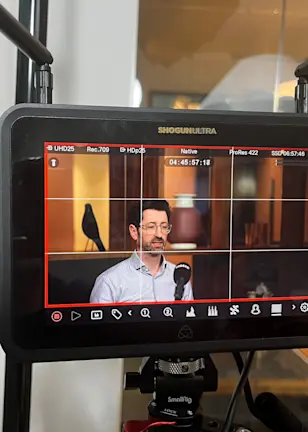There are two key reasons why collaboration is important for us. First of all, when working together, you can send a strong message to companies. Having a conversation as a single investor can be impactful, but when you speak on behalf of 10, 20 or more investors with related assets, it becomes even more powerful.
Next to this, there are so many sustainability areas that deserve attention. We invest in thousands of companies and we cannot engage with all of them, even with our team of 17 active ownership specialists. So, we have to prioritize. By partnering with others, we can work on more topics. And from a global perspective, it makes a lot of sense to collaborate: partnerships help us to cover more ground. So, all in all, collaboration enables us to have more clout.
Who do we collaborate with? We believe that effective action on sustainability issues requires partnerships with a diverse group of stakeholders. For that reason, we have different kinds of collaborations with other professional investors, while collaboration with NGOs and academics are of growing importance for us.
Collaborating on climate
Our collaboration with Climate Action 100+ is a good example of how this works in practice. In this partnership, we engage with the world’s largest carbon emitters in order to reduce their adverse impacts on climate change. One sole investor may not make a difference, but a group of 617 investors with a combined USD 65 trillion in assets cannot be ignored.
There are many more such partnerships making a real difference. For example, we collaborate on living wages through the Platform Living Wage Financials, and on governance via the Asian Corporate Governance Association, and also through local governance initiatives such as AMEC in Brazil and Eumedion. Some of our collaborations have proven to be extremely powerful: strength in numbers can accelerate a transition to a more sustainable future.
We work carefully to maximize the efficiency of the partnerships we are involved in – but there are drawbacks. Joining forces can sometimes also be a burden. Not every investor is as involved as we would like. There are sometimes classic free rider problems, when not everyone is contributing their fair share. Another key aspect to collaborating successfully is clarity on the direction of travel. If investors do not agree on the course of action towards a company, such a collaboration is likely to become bogged down with vague positioning that will lead nowhere.
Taking an active role
With every collaboration that we join, we therefore assess the likely contribution we can make, and what we want to achieve. In the 15 years that I have been involved in active ownership, I have seen all different shades of collaboration. Some of these were an outright success, but there were also clear failures.
Overall, the asset management industry is rapidly professionalizing, including the adoption of stronger process support for collaborative initiatives. That helps. At the same time, there is a massive growth in the number of investors that have entered the engagement arena, though not everyone has built a high-quality engagement capability overnight. This in itself can be challenging.
And we not only work with our peers; we also collaborate with NGOs to tap into their deep knowledge and experience of tackling sustainability issues. For example, we recently announced our partnership with the World Wide Fund for Nature Netherlands (WWF-NL). Their in-depth knowledge and research-driven approach are phenomenal, so this is helping us to develop a biodiversity investment framework. This collaboration will help us among other things to assess the impact that the companies in which we invest have on global biodiversity loss. This partnership is important as biodiversity is one of the three strategic topics in our current sustainable investing strategy.
Working with academia
Finally, collaborating with academics is key if you want to have a strong scientific base for your sustainable investing approach and expand your sustainability knowledge. For instance, we recently created a Sustainable Development Goals (SDG) Advisory Board in which three renowned academics – Prof. Kees Koedijk at Utrecht University; Cary Krosinsky at the Universities of Yale and Brown; and Prof. Rob van Tulder at Erasmus University – advise us on our SDG Framework and related strategies.
Our collaboration and active contribution to the investor leader group of the Cambridge Institute for Sustainable Leadership (CISL) is another excellent example of how beneficial this can be. CISL’s research has deepened our knowledge on nature-related financial risks and helped in areas that previously had only been researched to a limited extent. For example, we gained further insights on temperature scores, and what are the key approaches to biodiversity. The investment industry needs science to progress and fine tune their approach. Working with academics helps us attain that ambition.
Dilemmas but new dimensions
So to summarize: there are clear dilemmas in collaborating. Jointly you can achieve more, and your clout is bigger. But not everyone is progressing at the same speed, and there can be free rider problems.
Still, working with NGOs and academics has brought new dimensions beyond traditional investor collaborations. Such partnerships not only give us an abundance of new energy, but also help us to broaden our sustainability knowledge. Despite the challenges that inherently come with collaborations, I am convinced that the future of sustainable investing will be collaborative. Come and join the club!
This is the third in our new series of SI Dilemmas exploring some of the difficulties in implementing sustainable investing, even when there is a clear motivation and enthusiasm for it. While sustainable investing is not a perfect science, it remains at the heart of Robeco’s investment and active ownership approaches.
SI Debate
Important information
The contents of this document have not been reviewed by the Securities and Futures Commission ("SFC") in Hong Kong. If you are in any doubt about any of the contents of this document, you should obtain independent professional advice. This document has been distributed by Robeco Hong Kong Limited (‘Robeco’). Robeco is regulated by the SFC in Hong Kong. This document has been prepared on a confidential basis solely for the recipient and is for information purposes only. Any reproduction or distribution of this documentation, in whole or in part, or the disclosure of its contents, without the prior written consent of Robeco, is prohibited. By accepting this documentation, the recipient agrees to the foregoing This document is intended to provide the reader with information on Robeco’s specific capabilities, but does not constitute a recommendation to buy or sell certain securities or investment products. Investment decisions should only be based on the relevant prospectus and on thorough financial, fiscal and legal advice. Please refer to the relevant offering documents for details including the risk factors before making any investment decisions. The contents of this document are based upon sources of information believed to be reliable. This document is not intended for distribution to or use by any person or entity in any jurisdiction or country where such distribution or use would be contrary to local law or regulation. Investment Involves risks. Historical returns are provided for illustrative purposes only and do not necessarily reflect Robeco’s expectations for the future. The value of your investments may fluctuate. Past performance is no indication of current or future performance.


















